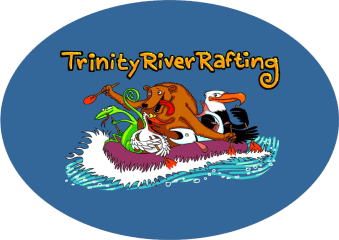Class I: Easy. Fast-moving water with riffles and small waves; few obstructions, all obvious and easily missed with little training; risk to swimmers is slight; self-rescue is easy.
Class II: Novice. Straightforward rapids with wide, clear channels which are evident without scouting; occasional maneuvering may be required, but rocks and medium-sized waves are easily missed by trained paddlers; swimmers are seldom injured and group assistance, while helpful, is seldom needed; rapids that are at the upper end of this difficulty range are designated Class II+.
Class III: Intermediate. Rapids with moderate, irregular waves which may be difficult to avoid and which can swamp an open canoe; complex maneuvers in fast current and good boat control in tight passages or around ledges are often required; large waves or strainers may be present but are easily avoided; strong eddies and powerful current effects can be found, particularly on large-volume rivers; scouting is advisable for inexperienced parties; injuries while swimming are rare; self-rescue is usually easy but group assistance may be required to avoid long swims; rapids that are at the lower or upper end of this difficulty range are designated Class III- or Class III+, respectively.
Class IV: Advanced. Intense, powerful, but predictable rapids requiring precise boat handling in turbulent water; depending on the character of the river, it may feature large, unavoidable waves and holes or constricted passages demanding fast maneuvers under pressure; a fast, reliable eddy turn may be needed to initiate maneuvers, scout rapids, or rest; rapids may require robust moves above dangerous hazards; scouting may be necessary the first time down; risk of injury to swimmers is moderate to high, and water conditions may make self-rescue difficult; group assistance for rescue is often essential but requires practiced skills; a strong eskimo roll is highly recommended; rapids that are at the upper end of this difficulty range are designated Class IV- or class IV+ respectively.
Class V: Expert. Extremely long, obstructed, or very violent rapids which expose a paddler to added risk; drops may contain large, unavoidable waves and holes or steep, congested chutes with complex, demanding routes; rapids may continue for long distances between pools, demanding a high level of fitness; what eddies exist may be small, turbulent, or difficult to reach; at the high end of the scale, several of these factors may be combined; scouting is recommended but may be difficult; swims are dangerous, and rescue is often difficult even for experts; a very reliable eskimo roll, proper equipment, extensive experience, and practiced rescue skills are essential; because of the large range of difficulty that exists beyond Class IV, Class V is an open-ended, multiple level scale designated by Class 5.0, 5.1, 5.2, etc., each of these levels is an order of magnitude more difficult than the last; e.g.: increasing difficulty from class 5.0 to class 5.1 is a similar order of magnitude as increasing from Class IV to Class V.
Class VI: Extreme and exploratory. These runs have almost never been attempted and often exemplify the extremes of difficulty, unpredictability and danger; the consequences of errors are very severe and rescue may be impossible; for teams of experts only, at favorable water levels, after close personal inspection and taking all precautions; after a class VI rapids has been run many times, its rating may be changed to an appropriate class 5.x rating.
